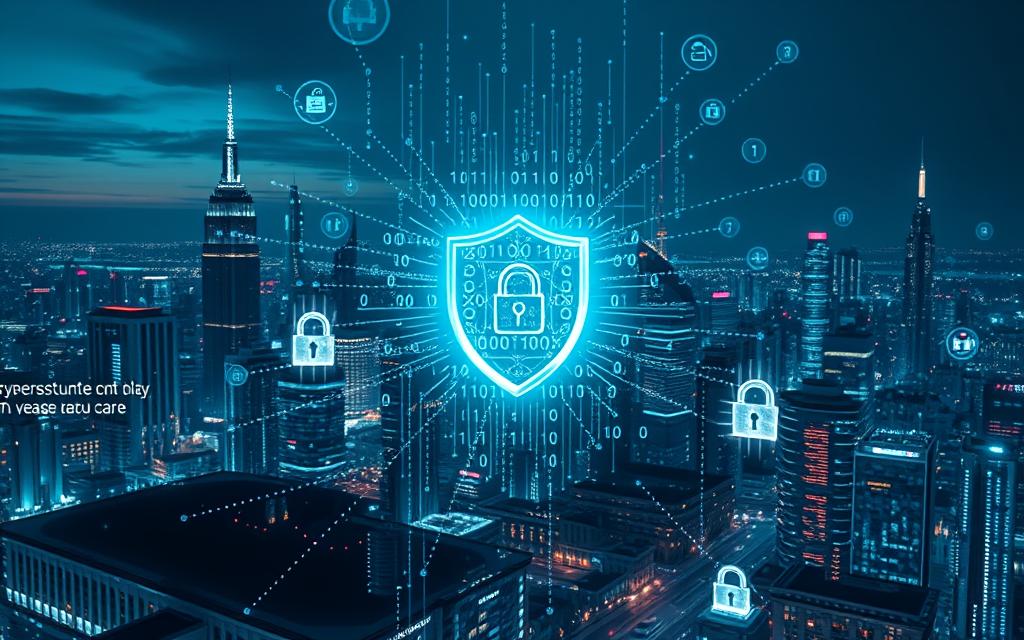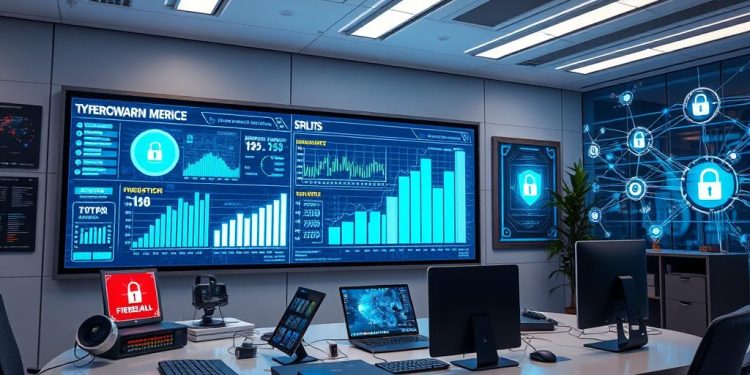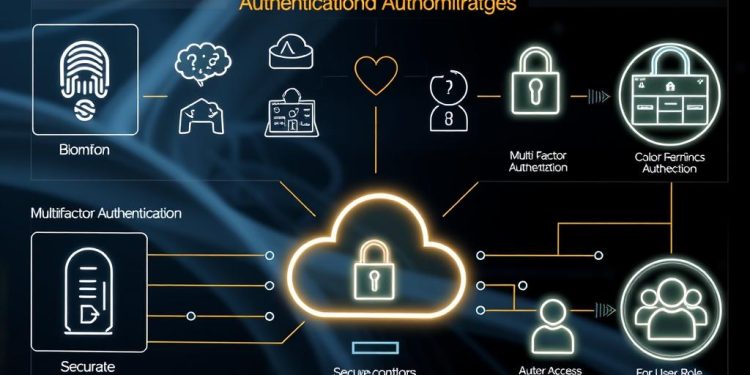In today’s ever-evolving digital landscape, ensuring adequate Cyber Threat Protection is crucial for every organization. As you transition to remote work and rely more on cloud-based systems, the risk of facing application vulnerabilities increases significantly. Cybercriminals are becoming more sophisticated, employing various strategies such as malware, phishing, and ransomware to compromise systems, steal sensitive information, or even launch further attacks.
Understanding the implications of inadequate security can help you grasp the seriousness of the situation. Financial losses, reputational damage, and operational disruptions can all stem from a single breach. This reality compels you as product owners and technology leaders to equip yourselves with actionable insights to safeguard your digital assets against common threats.
Understanding the Importance of Cyber Threat Protection
The rise in cyber threats illustrates the critical need for robust security measures in today’s digital landscape. As technology integrates deeper into daily life, vulnerabilities expand, providing ample opportunities for cybercriminals to exploit systems. Organizations must acknowledge the increasing sophistication of these attacks, which often involve techniques such as SQL injection and cross-site scripting. The stakes are high, with projected global cybercrime costs surging to $10.5 trillion annually by 2025. This figure reflects a significant urgency for investment in cybersecurity.
Growing Sophistication of Cyber Attacks
Cybercriminals continuously adapt and enhance their tactics, making traditional security approaches less effective. Phishing and social engineering tactics account for 50% of data breach incidents, underscoring the necessity of robust risk mitigation strategies. Ransomware attacks, increasing by 13% over the past five years, exemplify this evolution. Without proper defenses, your organization may become the next target, facing severe financial and reputational repercussions.
Consequences of Inadequate Security
The ramifications of failing to secure systems can be devastating. The average cost of a ransomware incident hovers around $1.85 million, causing irreparable damage to businesses, particularly small and medium-sized enterprises. A notable 24% of organizations have indicated experiencing at least one ransomware attack. Thus, fostering a culture of security awareness among employees and enforcing effective protocols is vital. Insider threats, whether from negligence or malicious intent, can compromise your security framework further.
Investment in Robust Security Mechanisms
Investing in robust security mechanisms is no longer merely beneficial; it is essential. The cybersecurity market is projected to expand from $217 billion in 2021 to $345 billion by 2026, driven by a compound annual growth rate of 9.7%. Organizations must embrace multi-factor authentication, strong password policies, and a multi-layered security approach to effectively mitigate risks. Ignoring these measures could lead to significant, avoidable losses as cyber threats become increasingly prevalent.
Common Web Application Vulnerabilities
Web applications are increasingly targeted by cyber threats, with various vulnerabilities serving as gateways for attackers. Understanding these vulnerabilities, as identified by the OWASP Top 10, is crucial for developing robust security practices. This section discusses key application vulnerabilities, along with insights on how to mitigate them.
Injection Attacks
Injection attacks remain one of the most significant risks, being responsible for approximately 94% of web application vulnerabilities. SQL injection, a common form of this attack, occurs when attackers manipulate unvalidated input to execute harmful queries against a database. About 30% of known vulnerabilities arise from improper input validation, emphasizing the necessity for stringent validation checks.
Broken Authentication and Access Control
Broken authentication and access control issues expose sensitive information, permitting unauthorized users to access restricted areas. With 94% of applications tested showing some form of broken access control, this vulnerability underscores the need for fortified authentication measures. This includes proper session management and user privilege controls.
Security Misconfiguration
Security misconfiguration is detrimental, with 90% of applications demonstrating some level of vulnerability in this area. This issue often stems from default settings being left unchanged or inadequate application hardening practices. Regular audits of security settings can significantly mitigate risks associated with these configurations.
Outdated Components and Libraries
Utilizing outdated components exacerbates security risks, with vulnerabilities found in legacy systems often exploited by attackers. As the OWASP Top 10 reveals, keeping up with updates is essential, as technologies evolve. Awareness of vulnerabilities in third-party libraries and conducting regular updates of these components can drastically reduce exposure to potential threats.
Implementing Security Best Practices
Maintaining a secure application involves adopting best practices tailored to your organization’s specific needs. As cyber threats continue to evolve, utilizing established cybersecurity frameworks becomes crucial in achieving secure development and effective risk mitigation. Organizations can establish a robust security posture by following structured guidelines that encourage proactive measures.
Utilizing Cybersecurity Frameworks
Frameworks such as ISO 27001 and NIST offer comprehensive guidelines for managing security risks. These frameworks help you assess vulnerabilities, implement security controls, and ensure compliance with regulations like GDPR and HIPAA. Understanding and applying these cybersecurity frameworks can significantly enhance your organization’s capability in secure development and risk mitigation.
Regular Monitoring and Updating of Security Settings
Staying ahead of potential threats requires consistent monitoring and timely updates of your security settings. Regularly auditing your application and its components can help identify vulnerabilities, ensuring that you’re prepared for emerging threats. Incorporating strong, unique passwords and enabling Multi-Factor Authentication (MFA) can protect against unauthorized access, potentially reducing risks by 99.9%. Furthermore, ongoing employee training remains critical, as 95% of cybersecurity breaches stem from human error. Organizations should emphasize the importance of a security-conscious culture, as this can cut the chances of successful attacks in half.
| Best Practice | Description | Impact on Cybersecurity |
|---|---|---|
| Utilize Cybersecurity Frameworks | Implement structured guidelines for risk management | Enhances overall security posture and compliance |
| Regularly Monitor Security Settings | Consistent audits and updates to identify vulnerabilities | Prepares organization for emerging threats |
| Employee Training | Educate employees about security best practices | Reduces breaches caused by human error significantly |
| Multi-Factor Authentication | Enforce additional verification steps | Decreases potential for unauthorized access |
Web Application Security Techniques and Tools
Securing your web application requires an understanding of various protective techniques and tools. A combination of methodologies and technologies can create a robust security posture to fend off cyber threats effectively.
Static and Dynamic Application Security Testing
Static Application Security Testing (SAST) and Dynamic Application Security Testing (DAST) stand out as essential components in your security toolkit. SAST analyzes source code before deployment, enabling early detection of vulnerabilities. This proactive approach allows you to address security flaws before they become exploitable. On the other hand, dynamic application security testing evaluates live applications, assessing their behavior and identifying real-time vulnerabilities that may otherwise go unnoticed. Together, these tools provide comprehensive coverage to tackle various security issues.
Penetration Testing for Comprehensive Security
Penetration testing serves as a vital strategy for identifying and mitigating potential security weaknesses within your application. By simulating real-world attacks, experts can uncover vulnerabilities before malicious actors do. This process combines advanced tools with human expertise, offering a thorough assessment of your application’s defenses. As cyber threats have evolved significantly, the need for effective penetration testing has become paramount in safeguarding sensitive information and maintaining customer trust.
The Role of eXtended Detection and Response (XDR)
eXtended Detection and Response (XDR) plays a crucial role in enhancing your organization’s malware protection capabilities. This unified approach integrates threat detection and response across multiple platforms, making it easier to identify, analyze, and respond to sophisticated attacks. With XDR, your security systems can work in harmony to provide a holistic view of your applications’ security landscape, allowing for faster response times and improved remediation of potential threats.
| Technique/Tool | Description | Primary Function |
|---|---|---|
| Static Application Security Testing (SAST) | Analyzes source code for vulnerabilities before deployment | Early threat detection |
| Dynamic Application Security Testing (DAST) | Evaluates running applications to identify real-time vulnerabilities | Live threat identification |
| Penetration Testing | Simulates attacks to uncover vulnerabilities | Comprehensive security assessment |
| eXtended Detection and Response (XDR) | Integrates threat detection across multiple platforms | Holistic threat response |
Conclusion
In the rapidly evolving landscape of cybersecurity, your commitment to safeguarding applications against common vulnerabilities cannot be overstated. As we’ve explored, the growing sophistication of cyber threats — including ransomware, supply chain attacks, and social engineering tactics like phishing — highlights the vital need for sustained security measures. Regular updates tailored to emerging threats are essential, ensuring that you stay ahead of potential risks and effectively mitigate them.
Implementing best practices such as utilizing cybersecurity frameworks and conducting annual security reviews, including vulnerability assessments, are fundamental to compliance and security. Furthermore, fostering a culture that values ongoing cybersecurity training can lead to a significant reduction in breaches, as cyber attacks largely result from human error. Emphasizing education and awareness will position your organization stronger against external and internal threats.
Ultimately, prioritizing cybersecurity as an integral component of your business strategy is crucial. By proactively adapting to regulatory changes and investing in robust security mechanisms, you can build trust with clients and stakeholders while ensuring long-term operational success. Embrace this ongoing journey; the stakes of cyber threats are too high to overlook.










